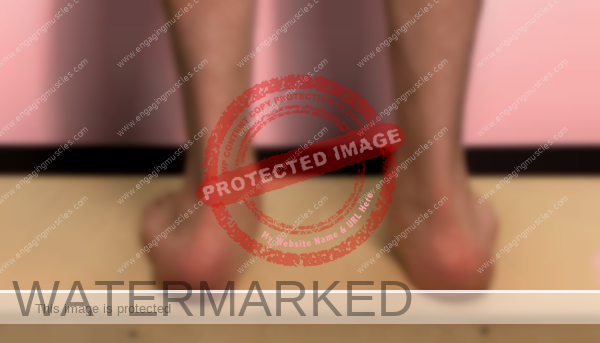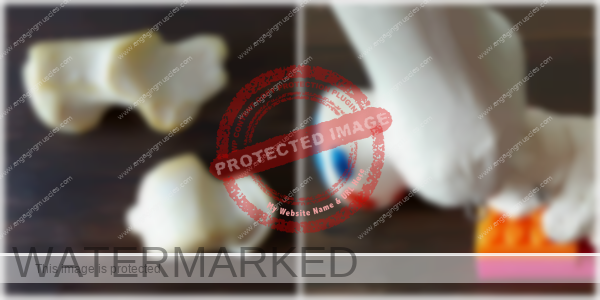Foot orthotic enthusiasts insist that the pain you feel in your foot is coming from your foot.
“He who treats the site of pain is lost.” – Karel Lewit
Not too long ago, an expert stood on a stage at an international running conference and attempted to weave pain science into the story on foot orthotics.
It turns out there’s an audience for this sort of thing.
If there was an award for the stupidest statement by an expert on the subject of #orthoses in 2019, this blurb by @Sports_Pod at the @runchatlive conference is hard to top. #Orthotics #Loserthink #SelfServingBias #CognitiveBias #MaslowsHammer pic.twitter.com/AN4TZwbhhs
— Engaging Muscles (@rickmerriam) December 30, 2019
I have a nominee for the stupidest statement by a foot orthotic enthusiast in 2020, “Orthotics are temporary as no one wears them 24/7.”
(Perspective)
Rather than use bias to take advantage of what you don’t know, I’ll provide you with a perspective that’s in alignment with principles.
There are principles of human function. Once you recognize principles, you stand a chance of getting to the root cause.
Without using foot orthotic inserts.
First things first. When you’re looking for answers, it’s helpful to know that there are levels of knowledge.
The most common levels of knowledge are surface-layer knowledge and first-layer knowledge. Since both of these levels are easier to obtain, they are the most prevalent.
Cookie-cutter, run of the mill, and the always popular one-size-fits-all approach are in the first-layer knowledge category.
(Priorities)
Anyone who chooses to adhere to what comes out of first-layer knowledge has the comfort of knowing that most of what they subscribe to fits into a certain business model. (Hint, hint.) 🧐
When your mindset and expectations are to get to the source, you’ll want the harder to come by and the most reliable advice that comes straight out of second-layer knowledge.
Practitioners who don’t resort to foot orthotic inserts possess practical intelligence, and the second-layer knowledge to know that what sounds off the loudest is rarely the source.
Current pain science tells us that pain is a sensation.
Going forward, you’ll want to know that there’s a side of the story on the pain that’s kept under wraps: More often than MOST foot orthotic enthusiasts acknowledge, pain is an alarm that sounds off when compensation and a false sense of stability reach threshold.
While billions of dollars are spent on unnecessary surgeries and exploratory procedures for aching backs, what you just read also applies to back pain.
When tight muscles can no longer figure out a way to provide a false sense of stability – you’ll experience pain.
If you’re looking for help with pain or injury while not knowing what you don’t know, I can see how it would be extremely difficult to differentiate second-layer knowledge from the levels that haven’t evolved to the highest level of expertise.
In many other areas of expertise, mastery is a term that’s used to describe the highest level of understanding in a particular area.
One can be a master at fitting and fabricating their version of pricey foot orthotic inserts, but that doesn’t make them any more valuable than the store-bought kind. 👊👊👊
If you’ve been told you pronate, external support in the form of orthotics is regularly recommended for “neutral” running shoes.
Since pronation is a natural motion that allows your feet to initiate shock absorption, what you just read is advice that comes straight out of surface-layer knowledge.
It’s surface-layer knowledge because you can just as easily read the same advice in a magazine. Or, just walk into most specialty running shoe stores, and you’re likely to hear something with a similar ring to it.
It’s advice that’s made out to be science-y. Upon further examination, it turns out to be pseudoscience.
Before going all-in on any advice, it’s helpful to develop the tiny habit of pushing the invisible pause button.
Then, ask yourself, “Is that true?” Followed by, “How is this going to play out tomorrow, and the day after that…?”
Before we get ahead of ourselves, let’s practice. Try this on for size, a foot orthotic enthusiast (who happens to sell orthotics) parrots either one of the following, “Your feet are too weak to hold themselves up.” “Your arches have fallen.”
Or, the always popular and often repeated, “You have flat feet.”

Is that true? To where taking on all that comes along with foot orthotic inserts is worth it?
Flat feet aren’t going to be “fixed” with foot orthotics.
Foot orthotics don’t allow arches to develop. If it appears that way, it’s due to the fact that there are many moving parts down there.
When foot orthotic inserts are underfoot, all of those moving parts allow for a tremendous amount of compensation.
I have first-hand experience working with many people who have worn orthotics, I can tell you with certainty that all of that compensation takes a while to undo.
As for muscles being too weak, foot orthotic inserts bring the ground up to meet the bottom of your feet. Gravity only pulls in one direction. This means that when you’re standing, gravity is pulling your feet straight down onto those foot orthotic inserts that are molded to fit the shape of your feet.

When you support any body part, muscles are weaker for it.
The foot orthotic insert in the image above costs several hundred dollars for the pair. Take a look at the distance from the floor to the arch of the foot.
It’s pitched in such a way as to bring your foot further from the ground. With little wiggle room for your feet to travel, every punch from the ground lands with more force. Imagine what that looks like over many miles.
Instead of adapting to the ground, your feet are forced to adapt to the foot orthotic inserts.
(Pseudoscience)
There’s no amount of time where you’re stronger for having orthotics underfoot.
Another clue that foot orthotic inserts are the WRONG approach is that they don’t allow for antifragility.
In other words, muscles throughout your feet aren’t the only muscles that are getting weaker.
While foot orthotics enthusiasts are busy chasing pain (and ignoring muscles), what they don’t recognize is the one constant with people who feel pain. The one constant is instability.
Rather than address instability at the source, foot orthotic enthusiasts force function and increase compensation with orthoses that aren’t as customized as you’re led to believe.
Buyer Beware
Foot orthoses are customized for feet that are already compensating.
Remember, your feet are compensating for every pain, injury, and surgery you’ve experienced over a lifetime.
Compensation is accumulative. (emphasis added)
When a foot orthotic enthusiast puts those pricey inserts in your shoes, they are piling instability upon instability.
Stacking stability on top of stability is a more productive way of approaching pain.
The key is to turn a false sense of stability into a level of stability where your brain no longer senses instability.
That’s the side of the story that continues to go undetected. (emphasis added)
It’s also the side of the story that comes along with possessing practical intelligence and second-layer knowledge.
When you have pain in one foot, you aren’t getting out of that office with a single foot orthotic insert.
Both feet are forced to take on all that goes along with having foot orthotic inserts underneath your feet. All because you had pain in one foot.

When a foot orthotic enthusiast brings the ground up to meet the bottom of your feet, there’s no way to avoid what your knees are forced to take on. It’s just not possible. This is due to the fact that your lower leg is an extension of your rear-foot (read: heel).
(Principles)
Whether you’re standing or walking, your feet are leading the dance. And, your knees are next in line.
In other words, in the process of driving your feet away from the pain from the bottom-up, your knees are forced to follow the directions that your feet move.
Since your feet are taking a punch from the ground from the bottom-up, your knees are also forced to go in the wrong direction at the wrong time. And, your hips are next in line…
Orthotics enthusiasts aren’t interested in shining a light on that evidence.

There’s a RIGHT way to go about addressing pain.
When your brain recognizes an increase in stability, you won’t feel the sensation of pain. Increasing stability also gives the tight muscles the signal to relax into the new available range of motion.
The RIGHT approach allows for the best outcome. And the best outcome is one where muscles provide stability to allow for more available range of motion at the right time.
There’s a right time for muscles to decelerate pronation and accelerate supination.
The WRONG approach looks a lot like throwing a bunch of stuff at symptoms only to wait and see if anything sticks.
The wrong approach to addressing foot pain also relies on luck and placebo.
Store-bought foot insoles allow for much of the same.

Now, picture a suspension bridge.
Each suspension wire represents a muscle that’s responsible for keeping your weight evenly distributed across your feet.
When each one of your suspension wires is capable of generating tension, together, they allow for a certain amount of stiffness.
More stiffness allows for more spring via the storage of elastic energy.
Muscles that are capable of providing a certain amount of stiffness are capable of sustaining tension. They are also capable of generating tension at a moment’s notice.
The muscles that represent your suspension wires are located far from your base. As you might have already imagined, these muscles are capable of some heavy lifting.
Foot orthotic enthusiasts fail to recognize that most of the muscles that pull your feet against the pull of gravity are located far from your feet.
Because of their size and orientation to your hips, these muscles are capable of doing some heavy lifting.
(Leverage)
When muscles that attach to your pelvis aren’t capable of pulling their weight, your feet are forced to take on more than they can handle.
That right there is the reason why so many people continue to deal with the symptoms that are consistent with plantar fasciitis.
SHIP.
(Art)
Can’t get to Dallas? Get details on how you can work with me from home.
Thanks for taking the time to read this post! If you enjoyed this post, please subscribe to Engaging Muscles. You can also like Engaging Muscles on Facebook, subscribe to my YouTube Channel, or feel free to connect with me on Twitter @rickmerriam.
Photography credits:
Image by Lily N. @lilymngo on Unsplash
- Author Bio
- Latest Posts

I have held a license to practice massage therapy for over 29 years. Early in my career, I was a nationally certified personal trainer for 18 years. During that time, I completed thousands of one-on-one private training sessions. I went on to teach biomechanics to personal trainers, group exercise instructors, and physical therapists throughout New England.
I worked as a sports massage therapist at ESPN.
Over the last few years, I have been quoted in Runner’s World UK, Massage Therapy & Bodywork, Massage Magazine, IDEA Fitness Journal, Massage & Fitness Magazine, and The Guardian Liberty Voice. I have also served as an applied biomechanics consultant for the fitness staff at Canyon Ranch, The Greenbrier, and ESPN.
From 2009 to 2018, I immensely enjoyed teaching applied anatomy & kinesiology at Parker University.
I offer the best deep tissue and sports massage at Engaging Muscles Massage in Dallas, Texas.

Thanks for sharing this blog. You provide so nice content.
Hi Rick,
I’m interested in your posts. I’ve used orthotics to treat a foot crush injury for a few years now. I used to run but now have a long term plantar plate tear that I’ve refused surgery for and am treating with taping (and orthotics). I’m interested in whether there is a link to orthotics and plantar plate damage and what I can do to strengthen my feet and restore their function.
Thanks for taking time to comment, Nicole.
I can’t say for sure that there’s a link between the use of orthotics and a plantar plate tear. Having said that, given the fact that orthotics force function and allow for a false sense of stability, I’m comfortable saying that there’s no way around the damage they cause.
If your goal is to get away from relying on orthotics, you’ll want to increase stability and strength. The reason I mention stability and strength is that there are plenty of resources that will tell you that performing certain exercises will increase foot strength. The side of the story those sources aren’t recognizing is that you’re attempting to strengthen muscles prior to clearing any pre-existing compensation that’s present prior to dynamic motion at a joint(s). If you just thought to yourself, “Well, that’s what has taken place in physical therapy for decades.”, you’re catching what I’m throwing down.
See, when you go to move through the motions with the intention of strengthening muscles, your brain is going to kick into high gear to recruit muscles that are capable of pulling (read: generating tension). While your joint goes through the path of motion, unconsciously, your brain is trying to protect you from going into positions where it doesn’t recognize stability. Meanwhile, without knowing it, you have muscles that aren’t capable of pulling to the best of their ability. It’s entirely possible you’ll walk away from those exercises with the feeling that you’re stronger for having done them, the problem is the under-performing muscles are still not capable of pulling their weight.
To get the best possible outcome, your best bet is to go all in on performing isometrics. If you aren’t familiar with the benefits of isometric exercise, you’re strengthening muscles (and tendons), while increasing stability with an outside force. And there’s no motion at the joint(s). This way, you’re strengthening and increasing stability in positions where you don’t have stability. Throughout the process, you aren’t giving your brain the opportunity to figure out the path of least resistance. That’s not to say that while performing an isometric exercise, your brain won’t attempt to go into positions where it senses stability.
The key is to know the positions in which you have instability. And from there, apply force in such a way as to target muscles that allow for stability in positions in which you have instability. If you can’t make it to Dallas for hands-on therapy and isometric exercise, the next best alternative is to work with me on Skype or FaceTime.